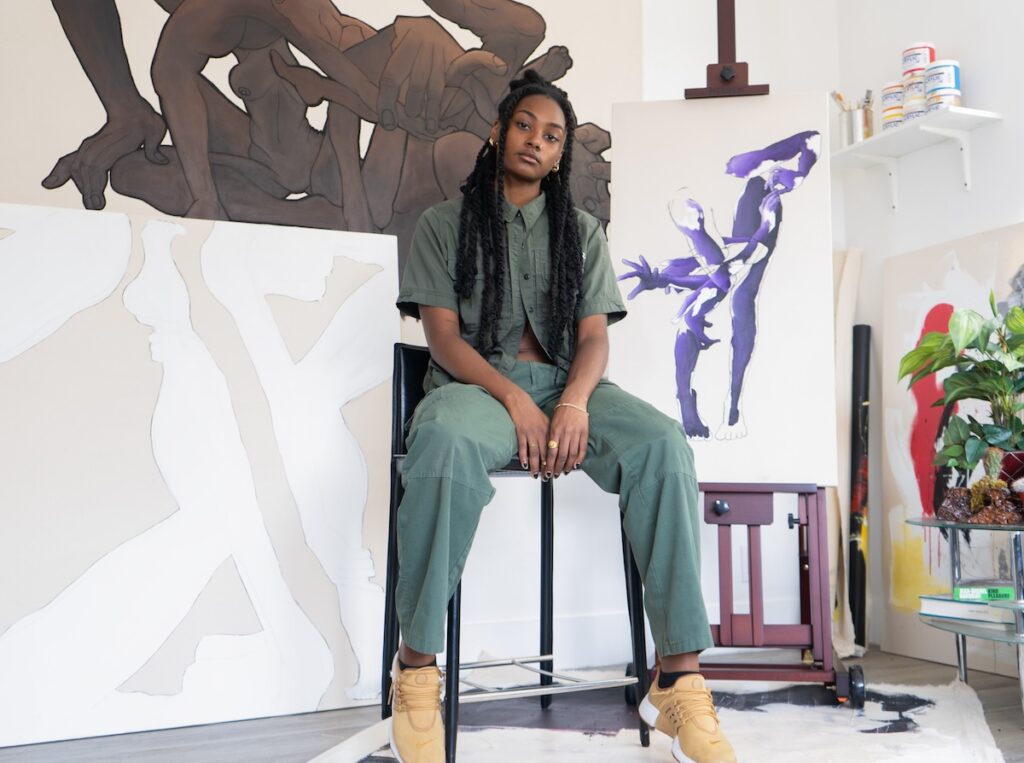How One Artist Feeds Her Curiosity With Negative Painting

As we all know, making art is about so much more than creating a visual image through drawing or painting. It’s about looking outside, and looking within. For example, Linda Kemp is an artist who uses the practice of negative painting to deconstruct not only how to paint the essence of a subject, but also what it is about that subject that moves her to begin with. She says that this understanding helps her translate the “spirit” of the subject into her work.
Linda is the author of Simplifying Design and Color for Artists: Positive Results Using Negative Painting Techniques and she’s also today’s featured artist. Keep reading for her inspiring and informative guest blog post. ~Cherie

On Negative Painting by Linda Kemp
I get my kicks figuring out how things fit together or “work.” Since the time I took apart my big sister’s 35mm camera I realized that dissecting things leads to information, understanding and in that particular case, to limit my investigations to things I could put back together again. These days I’m still curious about what makes things tick, snap and hum but for the most part I turn my attention to visual imagery to feed my curiosity. Sorting through design and color options is like working on a multi-layered puzzle. For me, investigating how the colors and shapes jive serves as my motivation to pick up my pencil or brushes.

The idea for a particular puzzle begins with something thrilling or intriguing that I might see on an everyday adventure or a color concept I’d like to know more about. Then I consider a strategy for building a painting that features that spirit. Because I’m spurred on to make discoveries and learn, I can put aside the goal of creating a “good painting.” I concentrate on one or two elements of color and design and leave the rest for another day of discovery. This allows me to simplify my ideas and focus on things that really interest me and extract what it was that motivated me in the first place.

How to Make a Negative Painting: Decipher, Understand, Interpret, Organize
In my attempt to unravel nature’s elusive mysteries and understand how it all fits together, my strategy relies on two things–simplifying the complicated and taking an alternative negative (subtractive) approach. Simply put, working in the negative means to establish the subject by painting around it rather than by painting the object or subject itself.
Artists working “in the negative” rely on informative shapes, spaces and descriptive edges–rather than the details inside–to tell their story and provide information. While gradation of color and shading are typically used to show volume, negative painters generally work with flatter forms and indicate depth by layering shapes and changing their size.
To effectively make better shapes it’s essential that we become more observant of forms and silhouettes and avoid getting distracted by inside particulars such as matching colors or texture-making. You can still include these features but don’t become preoccupied with them too early in the process.

A good plan for negative painting allows you to proceed with confidence. Here are a few guidelines I follow:
• Take time to decipher, understand, interpret and organize.
• Concentrate on the subject as a collection of basic, flat shapes that lock together.
• Simplify, stylize and arrange the basic shapes for better composition and design.
• Pay attention to the shape, size and placement of forms.
• Cut around the shapes.
• Layer the shapes to build your painting. Start with the object that’s closest to you and work back to the furthest, underlapping as you build front to back.
• Watercolor works best when building from light to dark or from intense to neutral colors. It’s also possible to change hue but layering opposites will neutralize the hues.
From the second I make my initial discovery through the planning process and onto the execution of layering, I challenge myself to learn. I learn every time I paint. Learning through painting makes me happy. Sharing ideas spreads the joy.
Perhaps the next time you look at something and wonder how you can make an image into a painting you can test out my strategy for yourself. Deconstruct it piece by piece, then reassemble as shapes and colors. ~Linda






Have a technical question?
Contact UsJoin the Conversation!